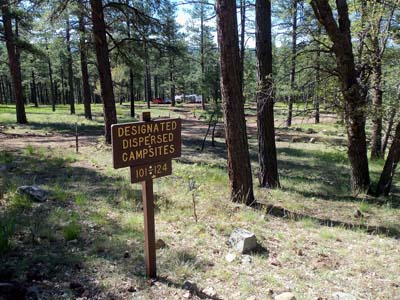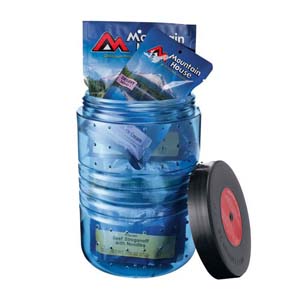By Dan Kidder
Managing Editor
There is nothing as healing and reconnecting as camping. Memories made around a wood campfire seem to burn into our brains more deeply than nearly any other activity. As more people discover the therapeutic benefits of camping, access to established campgrounds gets scarcer and when you do manage to grab a spot, the entire campground is over-crowded, noisy, and expensive. But with a little planning and knowledge, you can take the family far off the beaten path and camp for free.
Some people refer to it as backcountry camping, but the proper term for it is dispersed camping. Dispersed camping lets you camp for free in most cases, on public land, even when there isn’t a designated campground. This method of camping is great for getting away from other campers but comes at the cost of no amenities like a swimming pool, bathrooms, or running water. Often these dispersed camping locations will be far from major attractions and don’t have fabricated fire rings or tent pads. But despite the lack of amenities, camping in the backcountry can be much more enjoyable than camping in a crowded campground.
 Picking Your Spot
Picking Your Spot
To engage in dispersed camping, you need to know the rules of the area in which you plan to camp. Almost all Bureau of Land Management (BLM) land is open for some sort of dispersed camping. Areas that do not allow it will be very well marked. Much of the land controlled by the US Forest Service is also available for dispersed camping. Typically, National Parks and Monuments either do not allow dispersed camping or they tightly regulate and control where you can camp. State lands, including Wildlife Management Areas (WMA's), State Parks, and Trust Land will all have different rules. The key thing to figure out is who is responsible for the land on which you will camp. Once you determine that, you can contact that agency and figure out what their specific rules will be. A quick web search of the BLM field office for the state where you are planning to camp will provide a lot of resources and information. (www.blm.gov)
For Forest Service Land, you can find resources at www.fs.fed.us and choose a forest in the state where you wish to camp or if you know the name of the National Forest, you can choose that from another drop down list. Once at the page for the forest you wish to visit, there is a recreation link and under that, camping and cabins. Typically, there will be a link for dispersed camping guidelines in that area of the website.
Monuments and National Parks are strongly regulated, and access is controlled. Most do not allow you to backcountry camp in them, but a few have exceptions or provide areas just off of the property where you can set up a dispersed camp.
As for state and county land, every state is going to have different locations set aside, as well as regulations for how long you can camp or if particular areas are off-limits. You will need to check with your county to see what restrictions are in place. All of these agencies recommend that if possible, you use an already established camp site and fire ring rather than creating your own. Most also prohibit camping within a mile of an already established campground. If you have a large group of over 75 people, a permit will need to be obtained from the agency.
Making Camp
Each area will have different rules about how to make your camp, but the basic concept is to make as minimal of an impact on the area where you camp as possible. It is especially important when backcountry camping to pack out all trash and not impact the camping area. With millions of acres of wilderness, there aren’t resources to clean up all of the possible backcountry campsites. In an established campground, there are maintenance personnel to clean up and take care of the campground. In the backcountry, you are the only person who can take care of the wild places you use. These tips from the National Forest Service should act as a guide:
- Camp on bare soil if possible, to avoid damaging or killing plants and grass.
- Camping within 200 feet of any water source is discouraged.
- Avoid camping in the middle of a clearing or meadow; try to make your campsite less visible so that other visitors will see a “wild” setting.
- Pick a tent/camp trailer site that is already level with good drainage as opposed to digging trenches.
- Gather and use native firewood instead of importing wood that may be infested with invasive species. Firewood permits are not needed for gathering firewood that will be used in your camp. Permits are only necessary if gathering wood that you will take out of the area.
- Please use existing fire rings to minimize the scarring of new rocks, soil and plants.
- Practice ‘Leave No Trace’ principles (www.LNT.org)
In addition to these guidelines, it is important to make sure there are no fire restrictions in place before lighting a campfire. The Fire Service may initiate burn bans during especially dry periods or seasonally as needed to prevent forest fires. Check with your local fire service to determine if it is legal for you to have a campfire. Avoid open fires when signs warn that fire danger is high. In those cases, a propane fire ring makes a decent substitute without putting off hot embers that can float into the woods and create a fire hazard.
Camping on public land is every American’s right and by maintaining it and leaving it cared for, we can continue to exercise this right for generations to come. If not, then we risk the government clamping down to protect the land. The essential trait of a good backcountry camper is that they leave the site better than they found it. This includes:
- Not burning trash but packing it out.
- Not burning pallets that can put off toxic gases and leave nails behind.
- Not leaving behind garbage.
- Burying human waste in a cat hole at least 8-12 inches deep.
- Packing out used toilet paper rather than burying it.
- Not breaking bottles or other glass on the site or cleaning up any broken glass.
A key thing to remember when camping off the grid is that you are sharing the land; not just with other campers, but also the local wildlife. Most wildlife seeks to avoid human contact unless they have become habituated to a free meal. For this reason, contact with wildlife in established campgrounds is minimal. In the backcountry, wildlife may be drawn to your camp by the smells of cooking or the activity of young people running around playing. Most of this wildlife will still give you a wide berth, but the occasional ursa may be drawn to your picnic basket. It is also not all that uncommon to have a very powerful bear tear open your vehicle to get at the tasty treats inside. In bear country, it is advised to use a bear vault and/or a grizzly certified cooler. It is also a good idea to have some bear spray on hand. The Forest Service has done a great deal of research into dealing with an angry bear and have found the strong pepper spray to be the most effective means of deterring a bear.
 Other critters you may encounter are cougars, snakes, insect life, wolves and big game animals like elk or deer. In sections of the south, you may have wild hogs to contend with and their aggressiveness should not be underestimated.
Other critters you may encounter are cougars, snakes, insect life, wolves and big game animals like elk or deer. In sections of the south, you may have wild hogs to contend with and their aggressiveness should not be underestimated.
If you have your pets with you, they should be kept close by and leashed or tethered. In addition to wild animals, you may still encounter hikers, off-roaders, and other campers and they have the same rights to use the area as you do. Just as you would in an established campground, it is important to be a good neighbor.
People head to the woods for many different reasons. Henry David Thoreau told us his reason. “I went to the woods because I wished to live deliberately, to front only the essential facts of life and see if I could not learn what it had to teach, and not, when I came to die, discover that I had not lived.”
Whatever our reason, it is only polite to respect that others may be seeking to escape the noise and chaos of city living. Keeping your music quiet and keeping the celebrations low-key and peaceful will go a long way toward ensuring everyone has a good time. And just because you aren’t in an established campground doesn’t mean you are immune from a call to the local police or ranger station and a visit from Smokey Bear. Have fun but keep the rowdiness to a minimum.
Dispersed camping is my favorite way to get away from the crowds and relax in the woods and most places will let you stay between 14 to 16 days before you have to break camp and move to another location. I wish I ran into the problem of having to move camp more frequently, but my work schedule and deadlines limit the length of time I have to camp to a three-day weekend.
As John Muir once said, “into the forest I go, to lose my mind and find my soul.” That seems like a very good reason to go camping and getting lost in the vast wilderness of the backcountry is even better than a crowded campground for finding your soul.


